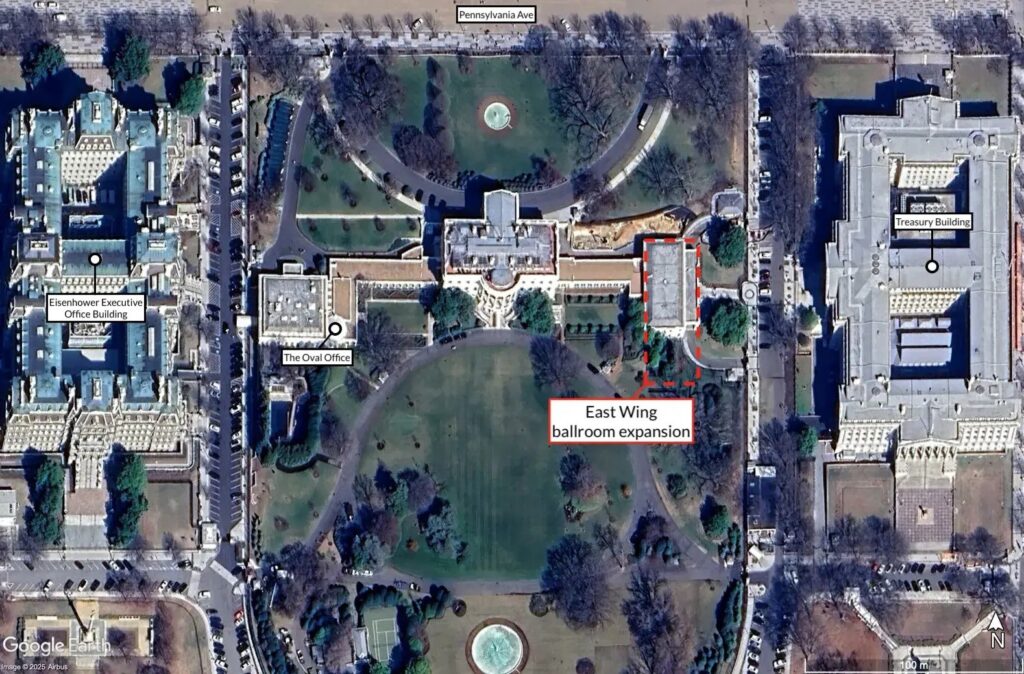
The $202 Billion Lie: Why Politicians Can’t Deliver Property Tax Freedom
Debt, Not Willpower: How $202.6 Billion in Voter-Approved School Bonds Is the Ball-and-Chain on Eliminating Property Taxes
Austin, TX — The biggest obstacle to lawmakers who promise to abolish or drastically cut school property taxes isn’t partisan gridlock or an unwilling governor. It’s money that voters already agreed to borrow: roughly $202.6 billion in outstanding independent school district bond debt — a sum that, when spread across Texas’ 5.5 million students, works out to about $36,800 per student and effectively locks future legislatures into continuing property-tax collections to pay that debt.
The fairness dilemma: why should the prudent subsidize the spendthrift?
Beyond the staggering numbers, fairness has emerged as a central challenge. When voters in one district approve hundreds of millions in bonds — for new stadiums, performing arts centers, or expansive building programs — those debts become locked-in obligations. But if the Legislature were to eliminate property taxes and shift to a statewide funding model, the costs don’t stay local. Taxpayers in fiscally disciplined districts, who either voted down bonds or avoided extravagant projects, would end up subsidizing the debt of their neighbors.
This creates a thorny equity problem: one community’s appetite for borrowing can effectively hold the entire state hostage, delaying property-tax elimination for everyone. Responsible districts — those that avoided over-leveraging their tax base — are forced into the same long repayment cycle as the districts that went all-in on debt. Lawmakers warn that unless Texas finds a way to firewall these obligations, the drive to abolish school property taxes statewide will continue to falter.
The numbers you need to know
A Texas Policy report and the state’s debt-tracking data show that outstanding ISD bond debt reached $202.6 billion in the most recent reporting year — the largest single component of local government borrowing in Texas.
Spread across Texas’ student enrollment, that comes to roughly $36,800 per student. That debt does not vanish if lawmakers change the tax code. It remains a contractual obligation backed by the taxing authority that issued it — and this legal reality ties the Legislature’s hands.
Lawmakers on record: bonds drive the property-tax problem
“Taxes are higher than if there was no bond … so every bond effectively is a tax increase,” said Rep. Brian Harrison (R-Midlothian) during a 2023 debate about school finance.
Rep. Morgan Meyer (R-Dallas), who carried HB 19 in 2025 to curb runaway local debt, framed it directly: “We can’t talk about eliminating property taxes while leaving the bond spigot wide open. Every dollar borrowed today is a tax locked in for the next 20 to 30 years.”
These blunt statements reflect why the bulk of legislative proposals in recent years have targeted future bond elections — raising voter approval thresholds, moving them to higher-turnout November ballots, and requiring more transparency about long-term costs. None of these measures erase the existing debt, but they aim to prevent further accumulation that would worsen the fairness gap between districts.
The political paradox: voters approved the problem
The irony is that most of this debt wasn’t foisted on Texans by bureaucrats alone — voters themselves approved these bonds at the ballot box. In many cases, school districts have resorted to scare tactics and emotional appeals to secure that approval.
The pitch is often less about fiscal prudence and more about guilt. Campaign slogans and superintendent talking points regularly frame the choice in moral terms: “If you don’t approve this, you must not support teachers,” or “Our teachers deserve more,” or the ever-present line, “It’s for the children.” Newer tactics now include, “You must not have children in school.” , “Teachers are paying out of their own pockets.” These carefully crafted appeals make resistance politically difficult, especially in tight-knit communities where opposing a bond can be painted as opposing kids or education itself.
And the strategy has worked. Across Texas, billions in bonds have sailed through under this messaging, saddling districts with long-term debt and tying the hands of future legislatures. The political paradox is this: the same voters who demand relief from crushing property taxes are also the ones who — swayed by emotional campaigns — have made that relief harder to achieve by approving bonds that lock in tax obligations for decades.
But those local “yes” votes have statewide consequences. The debt must be repaid, and repayment requires continued property-tax collections. For legislators aiming to abolish school property taxes, the very taxpayers clamoring for relief are also the ones who made that task exponentially harder by approving bonds.
Options — none are painless
- State buyout of local debt: A one-time appropriation of $202.6 billion is politically and fiscally unrealistic.
- Refinancing or defeasing debt: Lowers payments but doesn’t erase obligations.
- Raising voter thresholds for new bonds: Limits future growth but doesn’t fix existing debt.
- State assumption of debt: Shifts the burden, raising fairness concerns between high-debt and low-debt districts.
Each option forces the same uncomfortable conversation: who pays for decisions already made?
Bottom line
The dream of eliminating school property taxes runs headfirst into a wall of accumulated debt — $202.6 billion worth of it, or $36,800 per student. And until Texans reconcile the fairness problem — why should one district’s fiscal responsibility be undercut by another’s binge borrowing? — the debate will remain stuck.
Worse still, there’s a sleight of hand at work in many school districts. As soon as one bond issue approaches its final payment, local boards are quick to put another bond on the ballot. Instead of allowing taxpayers to enjoy the natural drop in property-tax rates that should come with retired debt, they simply roll that expiring tax into a new long-term obligation.
Districts then market these bonds with the line, “This will not raise your tax rate.” Technically true — but deeply misleading. What they are really saying is that your tax rate will not go down as it should have. The tax reduction that rightfully belongs to homeowners is effectively stolen, replaced with a new debt service that locks in the same tax burden for decades more.
This cycle ensures that property taxes never truly fall, even when debt is paid off. It’s a fiscal treadmill: as old obligations expire, new ones are issued, keeping taxpayers perpetually on the hook. That practice is one reason why the total statewide school bond debt has continued to climb rather than shrink.
For lawmakers and taxpayers alike, the conclusion is unavoidable: unless the bond game itself is reined in, every promise of property-tax elimination will remain an illusion. Texans cannot escape the burden of perpetual debt service so long as school districts treat bond expirations not as a chance to lower taxes, but as an opportunity to keep the gravy train running.

Fate, TX
Developers, Builders, and Political Insiders Fuel “Vote Yes for Rockwall ISD” PAC

Rockwall, TX – When money talks, it doesn’t whisper — and in Rockwall, it’s shouting from billboards, mailers, and TV ads. Behind the polished “Vote Yes for Rockwall ISD” campaign urging residents to support the district’s VATRE (Voter-Approved Tax Rate Election) lies a familiar cast of Texas developers, contractors, and political insiders — all with deep pockets and deeper interests in keeping the district spending big.
While the PAC’s glossy flyers and heartfelt slogans suggest it’s a grassroots movement of teachers and parents “standing up for students,” the campaign finance records tell a much different story. In reality, the PAC was created, funded, and operated by people who stand to gain financially from Rockwall ISD’s continued expansion.
A PAC Built by Developers, For Developers
The Vote Yes for Rockwall ISD PAC was born on August 19, 2025. That same day, it received its first $10,000 — seed money courtesy of Meredith and Ryan Joyce, owners of a land development consulting firm that works with both commercial and residential projects across Texas.
It was an auspicious start — and a revealing one. The Joyces’ business depends on district growth: more schools, more infrastructure, more construction. In short, higher taxes mean higher contracts.
A few weeks later, the second $10,000 came rolling in from Terra Manna, LLC, a real estate development and land management company led by Bobby Harrell and Bret Pedigo. Terra Manna specializes in large-scale residential projects — the very sort of developments that flood school districts with new students and new tax demands.
Then came another $10,000 from Northstar Builders Group, a firm specializing in — of all things — school construction and development. The irony practically writes itself.
If the VATRE passes, Rockwall ISD keeps spending, schools keep expanding, and developers keep building. It’s a self-perpetuating cycle of “growth” — for them.
The Builders’ Ball: Who Really Funds “Vote Yes”?
The PAC’s donor list reads less like a community support roster and more like a who’s who of Texas construction and development.
At the top tier:
- Joeris General Contractors, LLC – $5,000
- Z Constructors Nationwide – $5,000
- Matt Zahm (Z Constructors) – $5,000 (personally)
- RPRE, LLC – $3,500 (real estate brokerage and development firm)
These are not concerned citizens hoping to keep classrooms funded — these are professionals whose livelihoods are directly tied to district spending and capital projects.
Add to that a lineup of $2,500 donors, including:
- Chris Harp Construction
- Satterfield & Pontikes Construction, Inc.
- Glenn Partners (Architectural Firm)
- Billy & Julie Burton (private)
Then there’s the $2,273 in-kind donation from State Representative Justin Holland and his wife, Neely, for what they listed as “hats.”
$2,273 worth of hats? That’s either a new fashion trend in political branding — or a convenient way to funnel campaign merchandise under the radar. Holland, a familiar name in local politics, has long been an ally of the developer class, and his support here fits neatly into the pattern.
Other mid-level donors include Jason Volk Consulting, Noelle Fontes, and Brian Berry at $2,000 apiece.
At the $1,500 mark, the donor pool widens to include Elite Landscaping, PCI Construction, Skorburg Company, and Hanby Insurance, LLC — all companies that directly benefit from ongoing construction and development contracts in fast-growing communities like Rockwall.
Follow the Money — and the Math
In total, the PAC has reported $96,068 in contributions. But here’s the number that matters: $89,273 — or 93% — came from developers, builders, and real estate professionals.
The PAC’s promotional materials claim they’re “standing with teachers.” Yet only about 8% of all donations — under $1,000 each — came from teachers or district employees.
In other words, the people being used as the public face of this campaign are the least financially involved in it.
The illusion of grassroots support masks what is, in fact, a highly coordinated and well-funded lobbying effort — one aimed at convincing taxpayers to fund the very projects that enrich the PAC’s donors.
Big Money, Bigger Ads
The spending patterns are just as revealing. Since August, Vote Yes for Rockwall ISD has spent more than $27,000 on flyers and mailers, $9,000 on billboards, and even $3,000 on television ads — a heavy push for a local tax election.
They’ve also purchased $1,250 in ad space in Blue Ribbon News, the same publication that ran a “news article” touting the VATRE’s supposed benefits. The placement wasn’t coincidental — it was strategic.
And then there’s the expense that raised more than a few eyebrows: a $435.40 reimbursement to Meredith Joyce for “Car Polish Supplies.”
Car polish. From the same person who donated $10,000 in seed money.
One has to wonder what, exactly, was being polished — the campaign’s image, or something a bit shinier?
The Real Stakeholders: Not the Kids, Not the Teachers
Let’s be honest: when developers and construction firms pour nearly six figures into a local tax election, it’s not out of civic virtue or classroom compassion. It’s because they see a return on investment.
Every new bond, every tax hike, every “yes” vote translates into another round of district-funded construction — and another series of lucrative contracts.
Meanwhile, teachers — the supposed heart of the movement — are relegated to bit players. Their donations are symbolic at best, swallowed up in a sea of developer dollars.
Even worse, the campaign’s slick messaging exploits their image. Smiling teachers in front of whiteboards, holding “Support Our Schools” signs, while the fine print reads like a blueprint for cronyism.
Political Influence Runs Deep
The fingerprints of political insiders like Rep. Justin Holland only reinforce the perception that this isn’t about education — it’s about influence.
By lending his name (and hats) to the campaign, Holland helps cloak the PAC’s true motives under a veneer of community support. But his connections to the donor class are no secret.
When state legislators, developers, and contractors align to push a local tax increase, taxpayers should pause and ask: Who benefits most from this vote?
Spoiler: it isn’t the students or the teachers.
Manufactured Consent
The “Vote Yes for Rockwall ISD” campaign is a textbook case of manufactured consent. Using big money, polished marketing, and local political connections, the PAC is attempting to sway residents into supporting a measure that serves private interests far more than public good.
It’s the same formula seen across Texas — from bond packages to tax rate elections — where growth and progress are invoked as cover for sweetheart deals and endless construction booms.
Rockwall residents deserve to know who’s funding the message before they cast their ballots.
Because when nearly all the money pushing a tax increase comes from developers, builders, and their political allies, it’s no longer a campaign — it’s an investment.
And like any investment, the people writing the checks expect a return.
Bottom Line:
The Vote Yes for Rockwall ISD PAC isn’t a movement of parents or teachers. It’s a development-driven marketing operation, built to protect the flow of taxpayer money into the hands of builders, consultants, and political allies.
Rockwall voters should take note: when the people who build schools are the loudest voices demanding higher taxes “for the children,” it’s worth asking whether their real concern is education — or their next contract.
Featured
Radical Doc Ditches Her Scalpel After Paxton’s Lawsuit Exposes Transgender Hustle

Dallas, TX – A Dallas pediatrician, once hailed as a “trusted resource” for troubled teens, has thrown in the towel on her medical career. Dr. May Lau, the UT Southwestern associate professor whose office walls likely echoed with the sobs of confused adolescents, has voluntarily surrendered her Texas medical license. This comes hot on the heels of a blistering lawsuit from Attorney General Ken Paxton, who accused her of peddling banned gender-transition drugs to at least 21 minors, all while allegedly doctoring records to dodge the law.
Let’s rewind the tape, because this isn’t just another footnote in the endless culture war skirmishes. It’s a stark reminder that in the Lone Star State, at least, the adults in the room are finally drawing a line in the sand against the medical-industrial complex’s latest fad: turning kids into lab rats for irreversible experiments.
Senate Bill 14, signed into law by Gov. Greg Abbott in 2023 and upheld by the Texas Supreme Court, couldn’t be clearer: No puberty blockers, no cross-sex hormones, no mutilating surgeries for anyone under 18 chasing a “gender identity” that clashes with their biology. It’s common-sense guardianship, rooted in the unshakeable truth that children—bless their impressionable hearts—aren’t equipped to consent to life-altering alterations pushed by activists masquerading as healers.
Paxton’s office dropped the hammer on Lau back in October 2024, filing suit in Collin County and laying out a dossier of alleged deceit that would make a Watergate operative blush. We’re talking falsified prescriptions, bogus billing codes, and medical records twisted to make testosterone shots look like treatment for anything but affirming a minor’s delusion about their sex... alleges Paxton. Paxton says over 20 kids—biological females, no less—got dosed with this controlled substance, all post-ban, in direct defiance of Texas Health & Safety Code § 161.702(3). And for good measure, Paxton tacked on claims under the Deceptive Trade Practices Act, painting Lau as a scofflaw who didn’t just break the rules; she gamed the system to keep the hormone pipeline flowing.
Lau’s professional bio paints her as the epitome of the caring clinician: A pediatric specialist at Children’s Medical Center Dallas and Plano, with a self-proclaimed mission to “guide my patients to make the best and healthiest decisions for them“—alongside their parents, naturally. Her Healthgrades profile boasts expertise in adolescent health, reproductive woes, and menstrual mysteries, and she’s even open to telehealth chats for the Zoom-generation youth. But peel back the polish, and the shine fades fast: A measly 2.7-star rating from patients, whispers of controversy, and now this. Affiliated with powerhouse institutions like UT Southwestern, Lau wielded privileges that let her roam hospital halls unchecked—until Paxton turned the spotlight.
The fallout? Swift and surgical. As the case barreled forward, Paxton inked a Rule 11 agreement with Lau, slamming the brakes on her patient-facing practice mid-litigation. No more stethoscope sessions, no more “guidance” sessions that could scar a lifetime. And now, the coup de grâce: Her license is toast, voluntarily surrendered to the Texas Medical Board, ensuring she can’t play white-coated wizard with Texas tykes ever again. The civil suit chugs on, with Paxton gunning for injunctions and fines up to $10,000 per violation—because accountability isn’t optional when you’ve potentially wrecked young bodies and psyches for ideology’s sake.
Attorney General Paxton didn’t mince words in his victory lap, and why should he? “Doctors who permanently hurt kids by giving them experimental drugs are nothing more than disturbed left-wing activists who have no business being in the medical field,” he thundered in a statement that lands like a constitutional thunderclap. “May Lau has done untold damage to children, both physically and psychologically, and the surrendering of her Texas medical license is a major victory for our state. My case against her for breaking the law will continue, and we will not relent in holding anyone who tries to ‘transition’ kids accountable.“
Spot on, Ken. This isn’t about cruelty; it’s about custody of the innocent. While the ACLU’s Harper Seldin wails that such enforcement is a “predictable and terrifying result,” trotting out the tired trope of politicians meddling between “families and their doctors,” let’s call the bluff. Families? Try ideologues greenlighting puberty blockers for preteens. Best medical judgment? More like Big Pharma’s profit playbook, subsidized by blue-state bureaucrats and cheered by coastal elites who wouldn’t dream of letting their own kids near the knife.
Lau’s capitulation isn’t isolated—it’s the latest domino in Paxton’s crusade. Just this year, he’s reined in three other Lone Star docs for similar sins, while states like Arkansas and Florida see their bans clobbered in court only to bounce back on appeal. Twenty-six states now stand athwart this madness, a federalist firewall against the transgender tide.
For constitutional conservatives, this saga sings the praises of federalism at its finest: States as laboratories of liberty, shielding the vulnerable from federal overreach and cultural contagions alike. Dr. Lau’s license loss? It’s not vengeance; it’s vindication. A win for wary parents, bewildered youth, and the unyielding biology that no amount of activism can rewrite. As Paxton presses on, one can’t help but wonder: Who’s next in the crosshairs? Because in Texas, the housecleaning has only just begun.
Featured
National Trust Tries to Bully the President

The National Trust for Historic Preservation (NTHP), a private 501(c)(3) nonprofit, sent a sharply worded “demand” letter to the National Park Service (NPS) on October 21, aiming to halt President Trump’s bold plan to demolish the White House’s East Wing for a grand 90,000-square-foot ballroom addition.
The move, meant to modernize the People’s House for state dinners and global summits, has preservationists clutching their blueprints in horror. But this isn’t about saving history—it’s about a private club flexing muscle it doesn’t have, trying to strong-arm an Executive Branch that answers only to the Constitution and the American people.

Let’s get one thing straight: The NPS, which oversees the White House as a national historic site, isn’t a free-floating bureaucracy taking orders from self-appointed guardians of granite. It’s a cog in the Department of the Interior, a cabinet-level agency nestled firmly within the Executive Branch. Article II of the Constitution vests the President with singular authority to administer the government, meaning the NPS takes its marching orders from 1600 Pennsylvania Avenue, not a donor-funded NGO with a fancy letterhead. The President doesn’t need a permission slip from anyone—least of all a group whose congressional charter from 1949 (Title 54 U.S.C.) grants them zero enforcement power, only a soapbox to “facilitate public participation” in preservation debates.
The White House, battered by time and tight quarters, needs this upgrade. The East Wing, a 1940s wartime add-on, wasn’t built for 21st-century diplomacy. Trump’s team, riding a fresh mandate from 74 million voters, broke ground on October 20 to clear the way for a ballroom that can host world leaders without elbowing ambassadors into the Rose Garden. It’s a practical fix, not a wrecking ball to history. Yet the NTHP, led by President and CEO Carol Quillen, fired off their letter to the NPS, the National Capital Planning Commission (NCPC), and the Commission of Fine Arts, demanding a “pause” until the project undergoes “legally required public review processes.” Their fear? The new wing might “overwhelm” the White House’s aesthetic balance, as if a President’s vision for his own residence needs a focus group’s approval.

This is where the NTHP’s overreach gets laughable. Their charter, signed by Harry Truman, makes them a nonprofit cheerleader for preservation, not a coequal branch of government. They’re a membership organization—think country club for history buffs, bankrolled by corporate sponsors and tax-deductible donations. They partner with the NPS on grants and advocacy, sure, but that’s like a booster club claiming veto power over the coach’s playbook.
The NPS, managing $62 million in Historic Preservation Fund grants for FY25, answers to Congress’s purse and the President’s pen, not Quillen’s pleas. The NCPC and CFA? They’re advisory bodies, not czars. Their input on D.C. federal projects, born from post-WWII urban planning laws, carries weight only as far as the President allows. For the White House itself? That’s executive turf, exempt from the zoning red tape that snarls lesser projects.
Quillen’s letter drips with sanctimonious concern, urging “transparency and broad input from the public.” Translation: Let us, the enlightened few, gatekeep the nation’s heritage. This isn’t advocacy—it’s audacity. The NTHP’s claim to speak for “the American people’s investment” in the White House ignores the 74 million who voted for action, not paralysis. Their cozy ties to the NPS—shared programs, joint field offices—make this less a principled stand than a power play by insiders who think they own the narrative on “historic.” The American Institute of Architects piled on in August, fretting about “scale and balance,” but their opinions, like the NTHP’s, are just that—opinions, not edicts.
Conservatives know this game. It’s the same soft tyranny we’ve seen in Texas, where unelected boards and NGOs try to smother progress with red tape. From Austin’s zoning wars to the Alamo’s restoration fights, we’ve learned that preservation without purpose is just stagnation. The White House isn’t a museum diorama; it’s a living seat of power, meant to project American strength. Trump’s ballroom isn’t defacing history—it’s enabling it to serve the future.
White House officials, unmoved by the posturing, signaled yesterday that demolition continues. “The scope and size of the project has always been subject to vary as the process developed,” a spokesperson said, noting plans would hit the NCPC “at the appropriate time.” In other words: We’re building, and your memo’s been filed under ‘irrelevant.’ (my words) That’s the Executive Branch at work—accountable to the voters, not the vetoes of a nonprofit elite.
This dust-up exposes a deeper rot: the creeping assumption that private groups can check the President’s constitutional power. The NTHP’s letter isn’t just a misstep; it’s a microcosm of the swamp’s obsession with control, where every decision must pass through layers of unelected gatekeepers. Article II doesn’t bend to such nonsense. The President’s authority over his own residence, and the agencies that serve it, is as clear as the Constitution’s parchment.
In Texas, we’ve fought these battles before—against bureaucrats who’d rather embalm our past than let it breathe. The White House deserves the same fierce pragmatism. The NTHP’s demands are confetti in a constitutional storm—pretty, fleeting, and powerless against the will of a President elected to act. Let the jackhammers roar. America’s house is getting a long-overdue upgrade, and no amount of nonprofit noise can stop it.






You must be logged in to post a comment Login